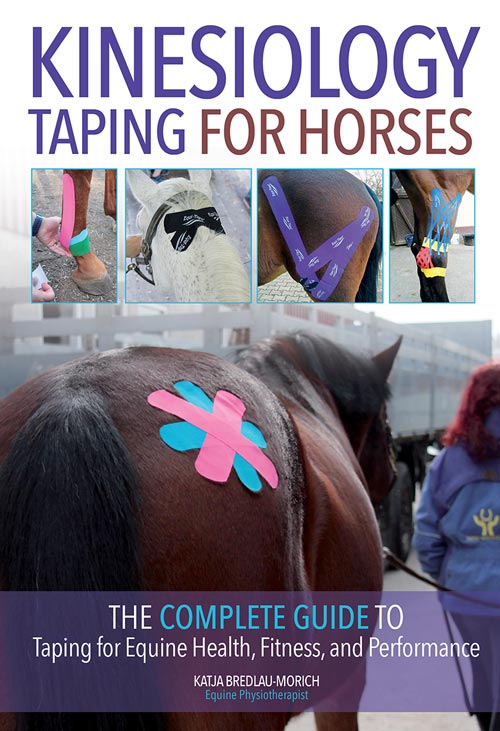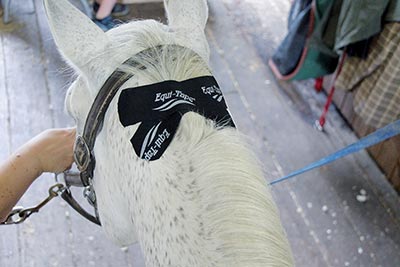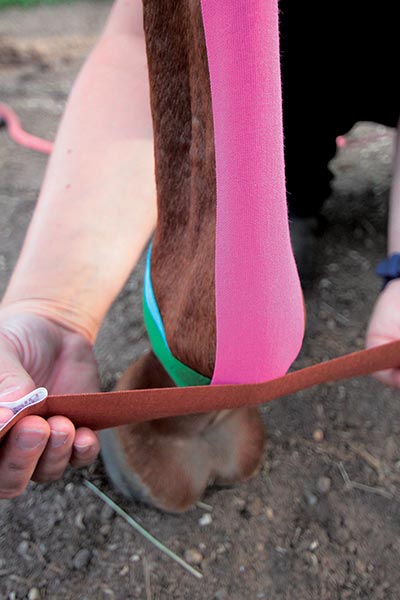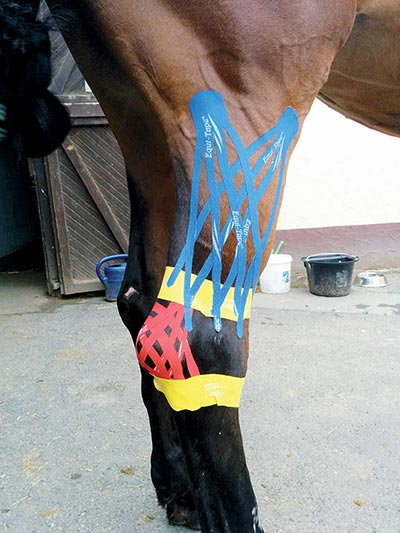
by Katja Bredlau-Morich
Kinesiology taping was developed by the Japanese chiropractor Dr. Kenzo Kase for use on the human body to support his chiropractic treatments. The exact date of development varies, somewhere between 1969, 1973, and 1979 depending on different sources. It obviously took some time from Kase’s first conception—through the prototype to the final production—which is probably why there are various dates of development.
But it was certainly developed sometime in the mid-1970s. It was at the end of the 1980s that Japanese and Chinese athletes were first seen wearing these colorful tapes at athletic competition. During the 2008 Olympic Games, the use of kinesiology tape grew and athletes from other nations used it as well. Four years later, at the 2012 London Olympic Games, kinesiology taping was almost a common standard for athletes.
As mentioned before, Dr. Kase is a chiropractor and he was looking for a modality that would support and improve his treatment. The manual adjustment of joints is often not as long lasting and effective as desired when the surrounding soft tissue isn’t treated and supported as well.
Before kinesiology tape was invented, the taping material was thick, sturdy, rigid, and without elasticity. That kind of tape was very helpful to support and stabilize a weak joint, but because it wasn’t flexible, it didn’t allow much range of motion. Most of the time, it even restricted the natural motion of joints.
Today we know that stability is good for the healing process of a broken bone but it is not good for soft-tissue problems. A light, moderate, and controlled movement is better for the healing process of tendons, ligaments, and muscles, which is exactly what the flexible and stretchable kinesiology tape does.
Kinesiology tape can activate or relax muscle activity, depending on the application. It supports and stabilizes tendons and ligaments while allowing full range of motion. The tape attaches like a second skin to the body, and, therefore, has no restrictions during regular everyday activity.
On the contrary, it actually promotes and improves it. When developing the tape, Dr. Kase also looked for long-term support and easy application, which patients could take home. Because kinesiology tape is like a second skin and doesn’t restrict the range of motion, it can be applied and left on during work, exercise, and sport; even while swimming or taking a shower. The general recommendation is to leave it on for as long as possible—but not longer than 10 days.

Since kinesiology taping was shown to be so successful on humans, it was only a matter of time before it was tried on animals, especially horses. All horses are athletes, not only competition horses that show high performance at international competitions but horses that are ridden or driven on a regular basis, and they can have all kinds of physical issues.
They get good veterinary care, massages, acupuncture, chiropractic treatments, and physical therapy just like two-legged athletes. So why not kinesiology taping, too?
An issue with my own horse several years ago led me to physical therapy for horses. The veterinarian couldn’t help, but the Physical Therapist (PT) could. During my time of study to become an equine PT I watched the Olympic summer games and that is when I first saw athletes (mainly beach volleyball players and track competitors) wearing these colorful stripes on their bodies.
Of course, I wanted to know what they were for, and I started gather information about taping. At that time this was a challenge since kinesiology taping wasn’t very popular yet. However, I was able to find enough information on the subject that I thought that the method could work on horses, as well.
After a thorough search, I found a course for equine kinesiology taping, which I took alongside my regular PT classes. That was the beginning of it all: As soon as I started practicing on my own horse and he was walking around the arena sporting colorful stripes, people started asking about taping, and I started explaining how it worked and how to do it.


A few years ago we had to move from Germany to the United States because of my husband’s work. That is when I became familiar with the company Equi-Tape®. The Equi-Tape CEO came to a taping demonstration of mine, and I also took a course with Dr. Beverly Gordon, the developer of Equi-Tape, the first kinesiology tape to be especially designed for use on horses.
Over time I met a lot of fellow equine practitioners in Germany and in the United States who had taping experience and who had attended other courses with different instructors. Ideas and taping applications were exchanged, and through my own experiences, and trial and error, I developed my way of taping with taping applications that have a good longevity and that I feel I can recommend. I have now held countless demonstrations for both therapists and horse owners.
This excerpt from Kinesiology Taping for Horses by Katja Bredlau-Morich is reprinted with permission from Trafalgar Square Books (www.horseandriderbooks.com).
About the Author
Katja Bredlau-Morich received certification in animal health from the Institut für Tierheilkunde in Viernheim, Germany. She is certified in kinesiology taping of horses by the Maia-Medical Group, Germany, and by Equi-Tape® in the United States, and has provided physiotherapy and taping services for horses in both countries.
She currently lives in Rodgau, Germany, where she operates Horse-Wellness, LLC (www.horse-wellness.com).

































